Opening Keynote
Susie J Schofield
University of Dundee
Translating evidence-based guidelines to improve feedback practices: The interACT case study
Is what we are telling the students clear in our minds but not in theirs? Are we checking with the students?
What’s the quickest way for the bee to get to the flower? It can fly over the maze!
We need outline the learning objectives and approach we want students to take. Do not constrain them though as long as they are able to achieve the learning outcomes you have asked them to meet.
Talking to students about open and closed mindsets to feedback opens them up to feedback.
[Nicol and Macfarlane-Dick 2006]
Good Assessment (JISC 2007):
- Engages students with the assessment criteria
- Supports personalised learning
- Ensures feedback leads to improvement
- Focuses on student development
- Stimulates dialogue
- Considers student and staff effort
Getting students to engage with feedback is more than just a technical issue. “Feedback is more important than the grades” – Are we sure? If so how do we help students to understand this?
Some problems they identified in their old programme:
- Inconsistency in the quality and quantity of feedback provided
- Assessment design
- Timeliness of feedback
Change always needs to managed carefully. Help staff to understand their feedback, including the positives and negatives. Might be best to bring in an external facilitator if highlighting examples of bad feedback.
Demonstrate the need for change in feedback practices and use a proper change management process to handle the changes and support staff through them.
Identify the barriers – real and perceived
Hard evidence is hard – how can we evidence the changes in feedback have had an impact when this would need to back tracked over time alongside changes in the curriculum, HEI and technology?
Now providing more formative assignments to allow for better understanding and feedback.
A curriculum is not like a drug that can be given in standard doses
Never forget to include the non-academics in your planning and implementation. They will usually have valid input from a different (usually unconsidered) point of view.
James Bennett & Jonas Lundqvist URKUND
URKUND – Plagiarism Detection Software
Been around since 1999, Global reach, very well known in Europe.
Take the text that has been submitted to the system, compare it to:
- The open internet
- The partner material to which we have access
- The repository of previously submitted documents
When students can not write first then think later they have to start thinking first and writing second.
You said a member of staff could see the % match go down and down, does the system then provide a history of submissions / re-submissions? Would see this through the grade centre view.
Does the Share analysis require login to access or can this be sent to anyone? Who does this report email appear to have come from? – Public with GUID
Ian Hallsworth-Jeeves & Chris O’Reily University of Derby
The Future Role of Computer Aided Assessment in the Admissions Process
Students invited to open day and asked to start with a paper assessment. Those who passed went to the next stage and those who didn’t were asked to go home.
Students who didn’t pass had wasted their time coming to Derby for the day only to have a look around and do a paper test.
Looked at electronic systems that met DPA requirements and wasn’t on they VLE as they would have to issue 1000’s of user accounts.
Come to use Blackboard Education.
Blackboard managed, students can self enrol.
Benefits:
- Cost savings
- Room usage on open days
- Paper cost
- Staff time
- Have saved enough to fund a full time lecturer for 6 months.
- Overhead on TEL team
- Transferable to other programmes
- Student Experience
- Standardised testing
- Reliability of test results
Started out with one test for all courses and have now split it to allow for bespoke questions for each course.
Changed questions to calculated formula
Implemented a degree of randomisation
FITB to Multiple Choice
Have added a question for the applicant to talk about themselves and then if the pass the test this is used to question the applicant to make sure it was them sitting the test.
My Q: Do you use online invigilation (proctoring) tools? A: no, we have looked at this but haven’t found anything that was cost effective and conformed to DPA ’98 requirements. [self thought: some applicants will be under 18 which may require extra levels of safeguarding around the viewing of the videos footage of the examination]
Malcolm Murray Durham University
Game on! Can you Encourage participation in Blackboard Courses using Gamification?
Students said they didn’t want to hear from staff what they should be doing – they wanted to hear it from other students. ==> Provided simple videos of students talking.
Discussions area was not getting any input from students.
Brought in gamification to try and support the engagement in the module.
There is more to gamification then just points and scoring.
Could this be done in Blackboard?
Adaptive release can be used based on scores and completion of other triggers (e.g. review status).
(NOTE: not great on mobile as adaptive release requires user to leave app and come back in to see update)
Badging
Open Source Leaderboard tool – allows you to display a leaderboard. Only the instructor can see student names, student only see where they are in the ranking.
Another Open Source tool will allow you to add some JavaScript which will look at the adaptive release and show the student what they need to complete in order to get to the next item / level.
Shown video where simple fun additions to everyday items changed people’s interationstion and practices. e.g. piano on stair steps reduced the number of people using the escalator. Fun sound on a bin making it sound like the deepest bin in the world resulted in a large increase of litter collected each day. See: http://www.thefuntheory.com/
Students asked to design games to support socialisation, they all wanted apps – didn’t want to go near a laptop.
One idea was to split large groups into teams for the leaderboard. That way team members can encourage others in their team to engage more to move up the board.
Next steps: socialisation vs. academic skills
—END OF DAY 1—
—START OF DAY 2—
Alan Masson
Head of International Customer Success, Blackboard Inc
Ticked Off: Towards Better Assessment & Feedback:
The Blackboard Perspective
Assessment and feedback is the engine of education
Does technology help to change culture? Can it? Should it?
- Assessment OF learning
- Assessment FOR learning
- Assessment AS learning
The NSS and now TEF are influencing education. But in a good way?
Bb always take a partnership approach to development.
Local Bb staff in the UK.
SASS – monthly updates
Learn 9.1 – twice yearly updates
Blackboard Open Education site available to use
Bb Quizzes – “Meet all of your needs”
Rubrics help student identify the key areas they could improve and how.
Staff are busy – a big reason why not to change. Making changes the afford efficiencies can help.
Managed hosting – responsive infrastructure to meet high stakes assessment system loads.
Grades Journey Benefits:
Timely return of data to SIS system
Single point of data entry / transfer
Avoid complex data transcriptions processes.
Steve Dawes Regent’s University London
University Wide Assessment – A Common Module Solution
Global Perspectives module.
3.5K FTE student with some international background
2014 working group set up to create a module for sept 2015.
12 week module, 10 credits pass/fail
Bi-Weekly Lead Events & Weekly seminars
Sept ’15 270 student 17 tutors / Sept ’16 295 students 16 tutors
Encourage students to cross the physical and intellectual borders of degree programmes
Problems:
Maintaining engagement across large, diverse cohort
Lead Event & Seminar attendance
Consistency of experience and learning
Efficiency of workflow for staff
Focus on feedback rather than grade
Solutions:
Poll Everywhere – When in a large group just watching what was happening on the stage isn’t great so they used poll everywhere to engage the audience.
Journals – Given weekly journal to complete and reminded each week to complete. Tutor at minimum provided feedback every other week.
Grade Centre – helped staff efficiency, allow to filter to just students they were looking after etc.
Turnitin Rubrics – Final assignment submitted to Tii and the rubric helped consistency and allowed the student to see where they had passed and failed.
Successes:
Positive staff feedback and increased interest in Grade Centre improvements
Increased uptake of Poll Everywhere
Student use of Journals
Raises profile on Learning Tech and Module standards
Failures:
Some student still focused on the pass fail rather than final feedback
Lead Event attendance drops throughout 12 weeks
Current Journals not grouped by tutor
Future:
Non-written Journal content
Alternative final assessments
Online discussion boards
Mobile working
Journal Rubrics
Tim Smale, e-Learning Fellow, Keele University
No! Don’t put that there!
My Slides: https://goo.gl/yXcpyK
Tim Ellis Durham University CEEC
Using Pebblepad for Academic Professional Development
How can students demonstrate skills they have picked up beyond the curriculum content that they have picked up at university.
Durham had a skills audit and they ask the students to self assess their skills on entry to university.
This starts to get them thinking about skills in general
Also had a Personal Development Planner – available through campus pack on blackboard
Old award had a Assignment and Face-to-face assessment.
Low engagement following completion of skills audit
Revamped this to better engage students and support staff to support the students.
Now 3 awards that link together.
Durham award has external employers assessment component.
Reviewed platforms available to deliver.
Submitted request for institutional licence to PebblePad. Got this this academic year.
Now ready to release to 9000 students in a week or so.
Discussed stakeholders and methodology of reaching the implementation point.

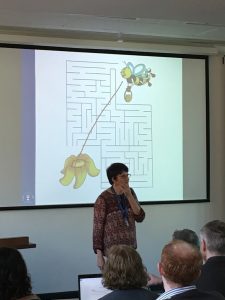
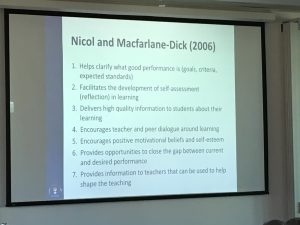

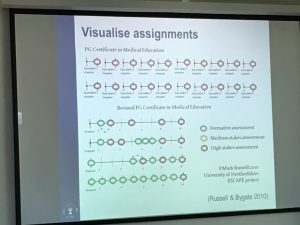
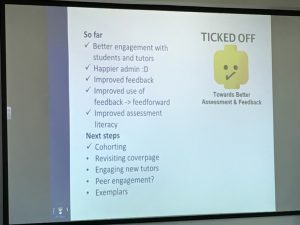
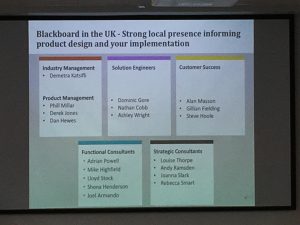
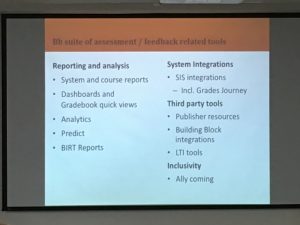
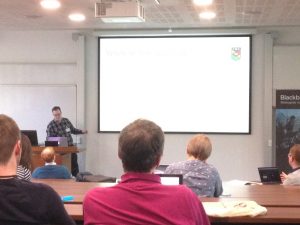
Be First to Comment